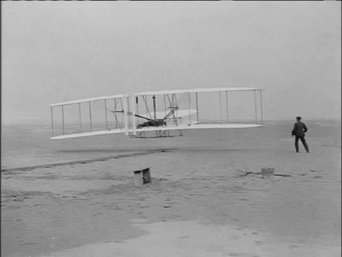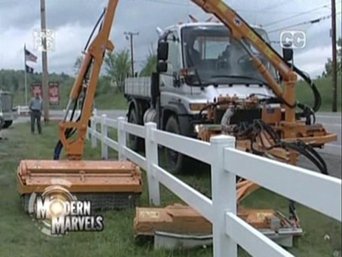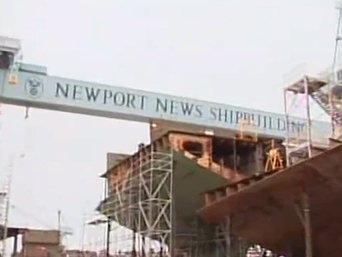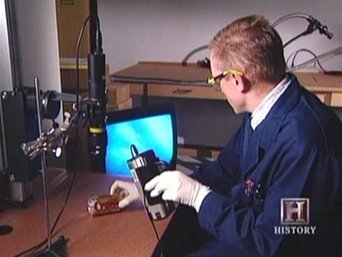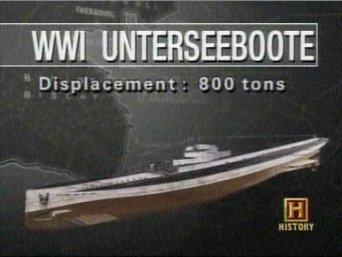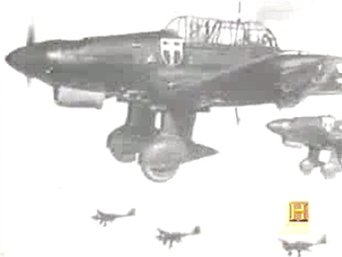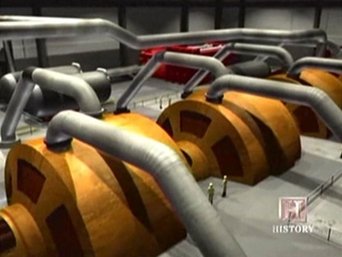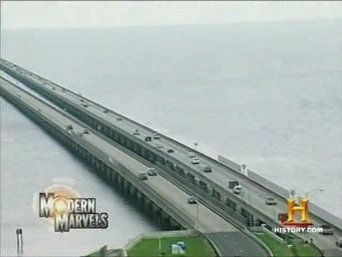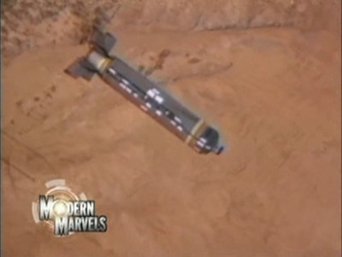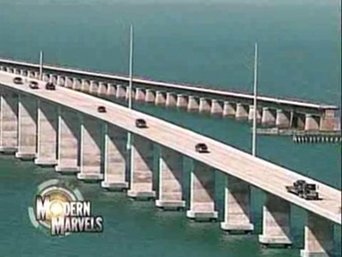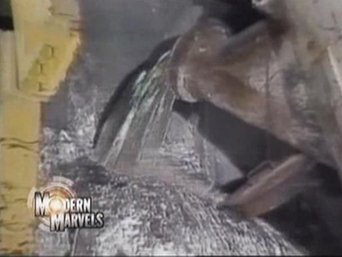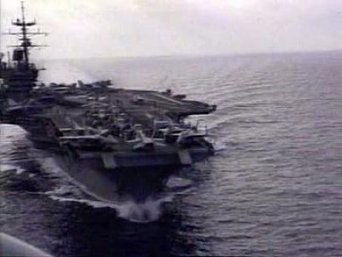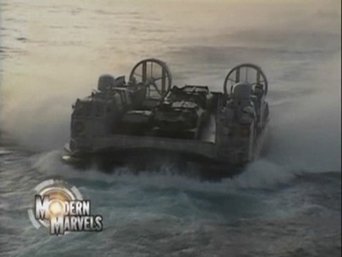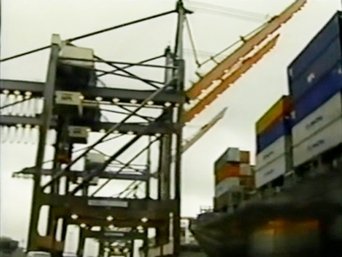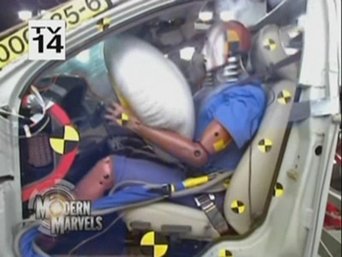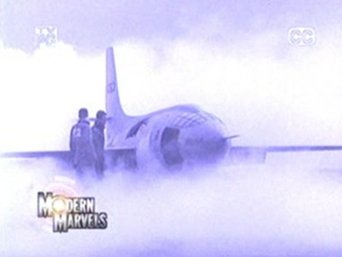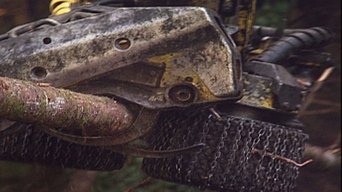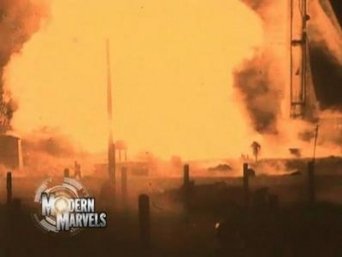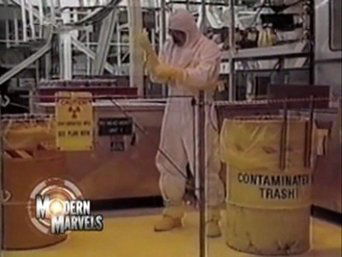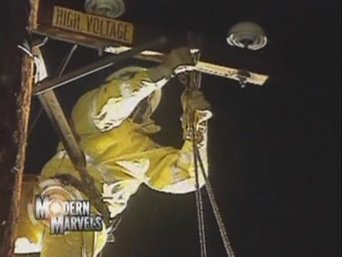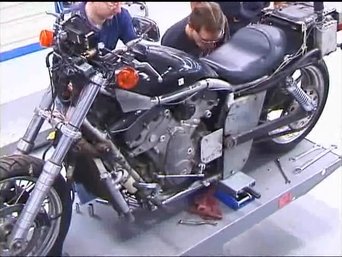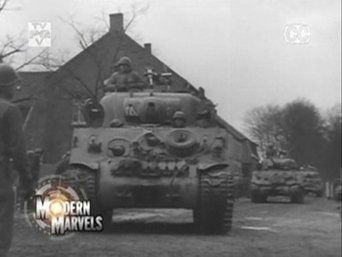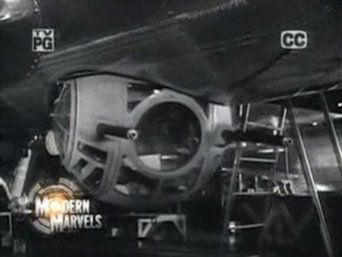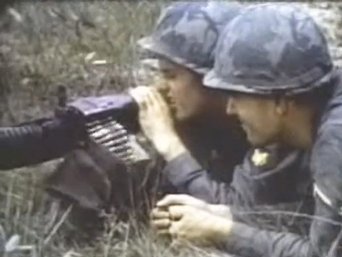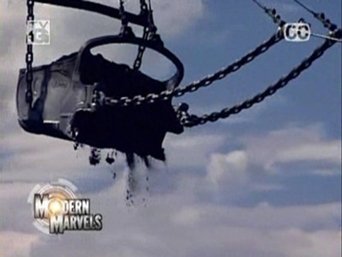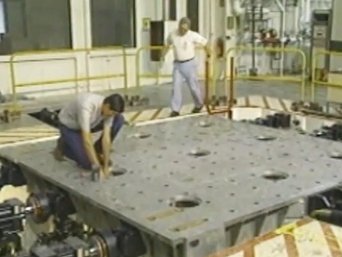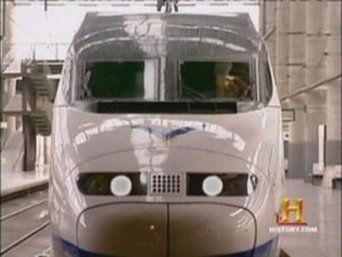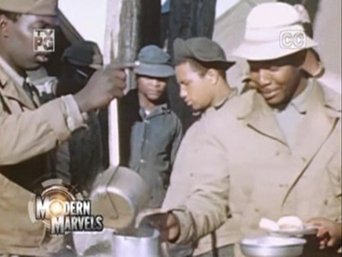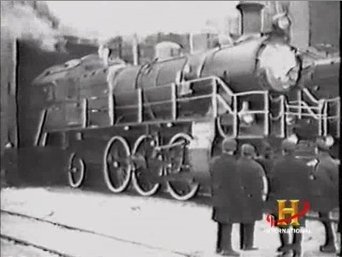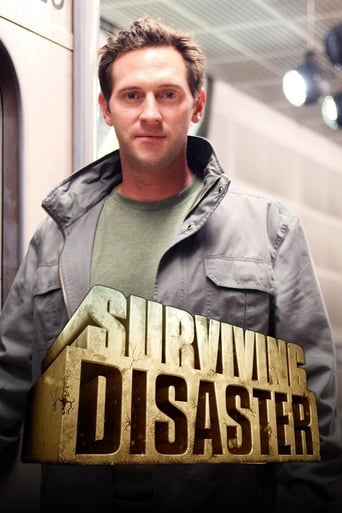Modern Marvels Season 10
HISTORY’s longest-running series moves to H2. Modern Marvels celebrates the ingenuity, invention and imagination found in the world around us. From commonplace items like ink and coffee to architectural masterpieces and engineering disasters, the hit series goes beyond the basics to provide insight and history into things we wonder about and that impact our lives. This series tells fascinating stories of the doers, the dreamers and sometime-schemers that create everyday items, technological breakthroughs and manmade wonders. The hit series goes deep to explore the leading edge of human inspiration and ambition.
Watch Trailer
Modern Marvels Season 10 Full Episode Guide
Examines some of the most notorious engineering failures of recent years and asks what went wrong and what we learned from them. We take viewers to the southern coast of Louisiana, where a misplaced oil rig caused an entire lake to be sucked into an underground salt mine; review the 1972 Buffalo Creek dam disaster; revisit the Exxon Valdez oil spill; see how radio and TV antenna towers collapse with alarming regularity; and look at the collision of two California icons–freeways and earthquakes!
All aboard the nostalgia express as we take a trip through the past to enjoy toys of our youth–the ones we can't forget and those that some of use never gave up! This is the real toy story! We take a look at five categories of boys' toys and see what relationship they have had on the development of young minds; talk with collectors of antique and specialty toys; and visit companies that make electric trains, Matchbox Cars, GI Joe action figures, and LEGO Bricks, among others.
During the Cold War, the Berlin Wall stood as a forbidding barrier in an embattled world. Erected in August 1961, the Wall system stretched 103 miles through and around Berlin, locking in 1.3-million people. 261 died trying to get over, under, around, and through it. We review the daunting devices within the Death Strip–one of the deadliest obstacle courses ever–and the ingenious ways people ran it. When the Wall fell with a thud in 1989, its pieces became souvenirs or were recycled for new roads.
Constructed as tombs for the ancient pharaohs, over 100 pyramids remain in Egypt. Built during a span of well over 1,000 years, they stand as cultural and engineering marvels of staggering proportions. But many things about these monuments, including the exact methods used to construct them, remain tantalizingly obscure. Travel back in time as we investigate their evolution–from the earlier mastaba to the Step Pyramid, Bent Pyramid, and of course, the magnificent necropolis at Giza.
Two brainy bicycle makers…a remote North Carolina moonscape…and an impossible dream. On December 17, 1903, Wilbur and Orville Wright took wing at Kitty Hawk and flew–as none before had–unraveling a complex problem that had defied history’s most inventive minds, from Leonard da Vinci to Edison. How did these high-school dropouts from Dayton, Ohio do it? Experts at the controls of full-scale replicas explain how they worked–or didn’t–and historians recount the brothers’ heated arguments.
Car aficionados rarely agree on what makes a true sports car, but they concede that in little over a hundred years, they went from crude to sublime. We’ll examine Britain’s MG, Triumph, Morgan, and Jaguar; Italy’s Ferrari; Germany’s Porsche and BMW; America’s Corvette; and Japan’s Miata. Take a fast-paced, high-octane ride, and you decide!
Land Yachts, Portable Palaces, Corrugated Condos–whatever the name, travel trailers and RVs have become an American icon–the 20th century’s covered wagon. Hit the road as we travel with recreational vehicles–from early versions built on the back of Model-T Fords, to roadside towns known as Hoovervilles during the Depression and WWII “trailer towns” set up for workers near munitions plants or aircraft factories, to modern RVs that resemble mansions on wheels and can cost nearly a million dollars!
At stadiums nationwide, thousands of football fans come together to show team spirit, eat incredible food, and join the community of tailgating. We journey around the U.S. to legendary tailgating colleges like Penn State, the University of Miami, and Louisiana State University, and visit the home-team parking lots of the Green Bay Packers, Dallas Cowboys, and Philadelphia Eagles. We taste the food, revel with spectators, and reveal the evolution of tailgating–from horse and buggy to tricked-out RV.
The world’s most famous brand, Rolls Royce, is owned by the same company that makes Bentley, a luxury leader once known for its prowess on the track. Their stories combine all that inspires envy in mere mortals; wealth, glamour, speed, sex, scandal and political intrigue.
For nearly half a century, one bomber has dominated the skies. With a maximum speed of 650 m.p.h., a range of over 8,000 miles, and ability to drop a massive 70,000 pounds of bombs, it’s the most lethal bomber in the world. This is the dramatic story of the race to produce the first intercontinental jet bomber and the success of the B-52–from the Cold War to its use in the war against terrorism in Afghanistan. The B-52′s projected combat life is until 2045–no other bomber comes close to this record.
Explore the technology and survival techniques used by the men of Lewis and Clark on their landmark journey to the Pacific. From their 15-ton supply ship to the 193 pounds of dehydrated soup they carried to Lewis’s prototype airgun and experimental iron boat, take a close-up look at the guns and gear behind this combination of 19th century high-tech and pioneering grit. Filmed on location along the Lewis and Clark Trail, the program features an interview with William Clark’s great-great-great grandson.
There is very little that collectors, historians and auctioneers agree about, but they do agree that a few passionate visionaries created a small number of automobiles that have ascended into the stratosphere of desire. This is their story. The top historical cars in the world all represent the ultimate attainment for the elite buyer. These cars are usually fast, always good looking, well built and rare. Like fine paintings or a Rodin Sculpture they are sought after by the well-heeled and discriminating.
In 2003, with Mars closer to Earth than it had been in 60,000 years, scientists launched three life-seeking planetary landers. If the long journeys prove successful, all should be hard at work on the Red Planet's surface by January 2004. NASA's EM Spirit /EM and EM Opportunity /EM and the European Space Agency's EM Beagle 2 /EM represent the pinnacle in the history of the search for extraterrestrial life. Leading scientists, who believe life may exist beyond Earth, explain skepticism about ETs having visited Earth.
Hop into the cab for the ride of your life as we examine extreme trucks, including: a jet truck that can travel 300 mph; the Baltimore Technical Assistance Response Unit's mobile command truck; a garbage truck with an articulated arm; a concrete pumper truck with telescoping boom and pumping mechanism; and a 4-wheel-drive truck that can convert from mower to street sweeper to backhoe to snow blower in mere minutes. Learn how SWAT, bomb squad, HAZMAT, and crime scene specialty trucks are built.
Hop into the cockpit for a daring century-long ride through the history of aircraft weaponry–from the very first handgun fired from a biplane. Features interviews with Chuck Yeager, Korean War ace Major Frederick Blesse, and pilots from Desert Storm and Kosovo, and historic footage of “Red Flag” exercises, when German pilots flew Soviet MiGs.
Shipyards are waterside construction sites where the extraordinary takes shape and where some of the largest tools built by humans help create the biggest machines on earth. But shipyards and ships of today bear little resemblance to those of antiquity. From ancient days to the 18th-century Industrial Revolution to the epic effort performed at Pearl Harbor, we examine the shipyard, and look to its future. Will the craftsmanship and practical knowledge of how to build ships disappear in the 21st century?
Based on the popular book, this episode explores historical building collapses–from ancient pyramids to the Cathedral at Beauvais to Kansas City’s Hyatt Regency–and demonstrates that clear warning signs often existed, but were ignored. We also examine the collapse of the Twin Towers in New York. Author Jim Chiles believes that designers and engineers must better prepare for all potential disasters–by understanding existing risks, they can prepare for the unknown, like terrorism.
No program better symbolizes human mastery of machines than does the space shuttle. But the breakups of EM Challenger /EM and EM Columbia revealed the program is tragically flawed. Based on the James Chiles’s book EM Inviting Disaster , we look at the 1930 crash of the EM R-101 /EM , a dirigible which, much like Challenger, was rushed into flight and met with disaster, and the EM Hindenburg /EM , whose 1937 explosion ended dreams of commercial flights for an entire industry. Will the shuttle program go the way of the dirigible?
To spearhead its fight against crime and terrorism in the 21st century, the FBI is relying on its $150 million-plus building, the new Crime Lab at Quantico. Here, nearly 700 highly trained scientists and technicians utilize cutting-edge forensic technology to unearth identities of perpetrators. We review the lab’s history, from humble start in a lounge in 1932 to today’s state-of-the-art complex, and see how 9/11 and the FBI’s new mandate to fight international terrorism changed the lab forever.
The amazing machines of human invention most often do our bidding with uncomplaining proficiency. But when they go wrong, they exact a terrible wage. In August 2000, the Russian submarine EM Kursk /EM glided through the depths of the Arctic Sea. But the demands of the Cold War had planted the seeds of disaster in this great ship–118 men would pay with their lives. Their deaths would bring about an enormous step forward in Russia’s evolving democracy. Based on James Chiles’s book EM Inviting Disaster /EM .
They dominated the Atlantic Ocean from Europe to the eastern coast of the U.S. They struck against Allied shipping with near impunity, holding England in a stranglehold for the first years of WWII–until sonar was developed. Now the hunters became the hunted. Meet German commanders and crewmen who survived service in “Iron Coffins”.
The story of a revolutionary breed of tank, a weapon whose speed and power would dominate European battlefields with a new kind of battle, the stunning Blitzkrieg–”lightning war”.
What if the Nazis had held out and the war in Europe lasted until 1946? We’ll review the remarkable aircraft that Germany had in development at war’s end, such as manned supersonic aircraft, manned V-2s, 100-ton intercontinental bombers, stealth bombers, and a fighter designed to shoot down B-29s at high altitude.
They make our lives more comfortable, more rewarding, and more secure. They are the magical machines that have brought us to the edge of the new frontier of limitless possibilities. But it is a hinterland filled with dangers and demons of our own creation. Based on the popular book Inviting Disaster by James Chiles, in this episode we explore the nuclear nightmares of Three Mile Island and Chernobyl.
In the land of Mardi Gras, jambalaya, and zydeco, exists an engineering marvel called the Lake Pontchartrain Causeway that seems to go on forever. Two ribbons of concrete span the largest inland body of water in Louisiana, and at nearly 23.87 and 23.88 miles long, these two spans form the world’s longest automobile bridge. At midpoint–12 miles out–water surrounds travelers who are unable to see either shoreline. The bridge is so long, it actually transverses 1/1000th of the earth’s circumference!
Precision-guided munitions, smart bombs were the media buzz of the first Gulf War and a major military and political driving force of the second. But their apparent sudden celebrity is deceptive. The history of smart bombs goes back to World War I and includes an ingenious, if eccentric, group of inventions and a cast of characters that boasts a Kennedy and a president of General Motors. Join us for the underground history of smart bombs, and a glimpse into the future of precision weapons.
The story of the birth and development of rapid fire weapons from the 14th century until the end of WWI–where on one terrible day the machine gun was responsible for mowing down nearly 60,000 men
General quarters! You’re going into battle aboard the century’s deadliest warships–the Dreadnought, Bismarck, Missouri, Yamato. Follow the 1916 Battle of Jutland, decisive World War II clashes in the Pacific, plus Persian Gulf War action.
Pound for pound, the small wooden Patrol Torpedo Boats of WWII were among the most powerful warships of all time. Daring PT vets recall why their speed and maneuverability were too much for giant, steel-hulled targets.
The engineering marvel Machu Picchu sits perched on a ridge in the Peruvian Andes. Originally built by the Incas, this magnificent structure remains a mystery. Was it an observatory? Pleasure retreat? Fortress? This program presents the most current theories.
Witness the construction of a terrorist-proof safe room. Discover how your windows might someday act as biological weapons detectors. Learn how scientists are protecting the food you eat and water you drink. In the biggest technological push since the space race, inventors are creating cutting-edge devices, gadgets, and gizmos to keep you and your family–and even your pets–safe. Find out what technology can do to protect you, and how you can use technology to protect yourself.
A spectacular roadway nearly 120 miles long, the Overseas Highway links mainland Florida with the Florida Keys, and contains 51 bridges, including the Seven-Mile Bridge. A boat was the only mode of travel from Miami to Key West until oil tycoon Henry Flagler completed his railroad line in 1912. After a 1935 hurricane destroyed 40 miles of track, the scenic highway was built using Flagler’s bridges. A $175-million refurbishment that ended in 1982 resulted in today’s remarkable Overseas Highway.
Combination rocket, spacecraft, and airplane, the space shuttle is the most complex vehicle ever built. Long before it ever flew, the shuttle was nearly scuttled due to political pressures, technological challenges, and cost overruns. The program not only overcame these challenges, but opened space to an international community of scientists, explorers, and dreamers. This is the story of the Columbia, the first shuttle to fly outer space, from inception to tragic demise in January 2003.
A major battlefield weapon since the American Civil War and the stuff of nightmares ever since, the civilian toll from landmines remains immense. Inflicted by an enemy that can’t be seen, landmines are littered throughout 64 countries, making life a game of Russian roulette for two-thirds of the world’s poorest nations. Featuring an interview with Jerry White, co-founder of Landmine Survivor’s Network, who lost a leg due to a landmine in Israel.
They constitute the very essence of the modern world; the cadence of our progress sounds in the measured ring of the blacksmith’s hammer. From soaring skyscrapers and sturdy bridges to jet planes and rockets, metals play a key role. Our journey begins before the Bronze Age and takes us into the shiny future when new metal structures–engineered at a molecular level to be stronger, lighter, and cheaper–shape human progress, as they have since man first thrust copper into a fire and forged a tool.
It takes brave sailors to steer their gunboats into waters where larger ships cannot go. In this historic documentary, relive the dramatic rescue of General MacArthur by a squadron of PT boats in WWII.
From the earliest experiments in WWI to the technological wonders that ruled the sea and sky of the Middle East, George C. Scott chronicles the history of one of today’s most versatile and powerful vessels afloat.
From "safe" bullets that stop hijackers but leave aircraft unscathed to bullets that chain-saw through steel and "smart" bullets computer-programmed to hit a target, this explosive hour examines the evolution of bullets from origin in the 1300s–stones and round lead balls shot from iron and bamboo tubes. Lead balls ruled until 1841 when a conical-shaped bullet changed ammo forever. We learn how to construct a modern cartridge, and at pistol and rifle ranges view demonstrations of modern firepower.
The challenge: Move millions of soldiers and tons of cargo halfway around the world and into the thick of action. How? Use the biggest ships, the widest planes, and the strongest trucks. Today, military planners move men and equipment further and faster than ever. The United States Transportation Command, answering to the Department of Defense, runs military transport like an efficient private shipping and travel agency. From the Civil War to US Transcom, we track the development of military logistics.
How does technology grasp nature’s most violent, chaotic storm? For half a century, U.S. meteorologists have been building a countrywide system of Doppler Radar, widespread automated data-gathering stations, geostationary satellites, and sophisticated computers to track and study tornadoes. Even with this massive scientific effort, forecasters can only begin to understand why tornadoes form and how to predict them. We’ll look at cutting-edge systems that attempt to measure the unmeasurable.
The chance of enemy confrontation by sea, tank, or air battle is small, but terrorist networks operating in the shadows will likely challenge the U.S again. Instead of waiting to react, the military’s new mission is to detect, deter, and defend America from terrorist attack. We examine cutting-edge technology that leads the fight in this new battle landscape, including Smart Bombs, Tactical Ballistic-Missile Systems, GPS-driven technology, Electro-Optical Systems, and the pilotless drone Predator.
Each day ships, trains, trucks, and planes haul supplies that keep store shelves full and factories moving. At every stop there’s a loading dock–an interface where shipping and storage hook up. You may not think much about a loading dock, but to the transportation industry it’s the very heart of their business. From ancient times to tomorrow’s lights-out facility, where computers and machines will store, sort, retrieve, and load stock without human interaction, we deliver the goods on loading docks.
Topless, unobstructed–the convertible completely transforms the driving experience and unlike any other car, sets the driver free. During this face-paced hour, experts highlight the history of the world’s most dynamic car design and the essential quality that makes it so unique. From the very first convertible design in 1915 to modern-day marvels of retractable hardtops, we peer under the hoods to see why the convertible remains the car that everybody wants, but only a few are bold enough to own.
Sandhogs work hundreds of feet down, where it is dark, damp, and dangerous, challenging nature’s awesome forces to drive tunnels through solid rock and sinking mud. They drill and blast, bore, mine, and muck. The painstaking process continues for days and yards, months and miles. Tragically, many sandhogs have been killed or injured in the process, but ultimately theirs is a story of triumph and survival. Join us as we review their impressive achievements and history.
In the mid-1960s, the US lost an average of 55,000 people yearly to car crashes. Since then, the number of cars on the road has doubled, but fatalities have decreased by nearly a third. The dramatic reduction is the culmination of research and development that led to safer roads and cars and quicker emergency response. But car-crash technology’s future involves removal of its biggest threat–human drivers! Find out if computers and radar can prevent everything from fender-benders to pile-ups.
For decades, the sound barrier loomed as an impenetrable wall against manned flight that buffeted planes with shock waves as they approached the speed of sound. Scientists thought the barrier couldn’t be breached–until the development of jet technology and rocket fuel at the end of WWII. This is the dramatic story, told through the eyes of many who were there, of the work leading up to October 10, 1947, when 24-year-old test pilot Chuck Yeager smashed through the sound barrier in a Bell EM XS-1 /EM aircraft.
When Paul Bunyan cried "Timber!", he never foresaw today's cutting-edge, controversial industry that feeds a ravenous, lumber-crazy world–a world striving to protect nature while devouring it. Come into the woods to see how he-men and hi-tech combine forces to topple 4-billion trees annually; journey to 19th-century America, when lumberjacks cut a legend as large as the timber they felled; and travel with a tree from stump to sawmill and learn its non-wood uses–from aspirin to film to toothpaste!
Among the most mysterious disasters, tsunamis–Japanese for “harbor waves”–claimed over 50,000 lives in the 20th century! Generated by offshore earthquakes, volcanic eruptions, and landslides, these giant water walls result from large-scale displacement of seabed sediment. Rolling rapidly over the ocean floor, a tsunami rises to rapturous heights when it hits land. Scientists in Japan, Hawaii, Oregon, Washington, and California show the latest technology used to predict these killer waves.
Engineering disasters can result in personal tragedy, national humiliation, and economic ruin. But buried within their wreckage lie lessons that point the way to a safer future. The fire at the Las Vegas MGM Grand Hotel, the collapse of Seattle’s Lacey V. Murrow Floating Bridge, the car that spurred creation of the National Highway Transportation Safety Administration, and the flaw that grounded the first commercial jet are among the engineering disasters that led to improvements in design and safety.
Toxic traffic is everywhere! An average of 800,000 shipments of hazardous materials hit our highways and railways daily. From Wild West wooden crates filled with explosives to HAZMAT containers of nuclear waste, we shadow dangerous cargo. We ride shotgun on a hazardous material shipment that's tracked by satellites; hunt down the hush-hush "ghost fleet"–trucks carrying classified government materials; and board a Con-Air flight moving another kind of nasty stuff–dangerous felons!
In this full immersion journey through the world of maximum off-roading, learn what it’s like to blow the carbon out of your system as we trace the history of the four-wheel drive vehicle. From the annual Baja 1000-mile race to the Paris-to-Dakar rally, off-roading has become an international sport for motorized thrill seekers. Drive along in your Jeep, dune buggy, Hummer, or SUV for this high-adrenaline, fun-filled romp as we see why 4x4s go where no one has gone before!
Look closely at those tall metal towers that span the country and you might see tiny specks climbing up the soaring steel like spiders on an enormous web. Meet the courageous linemen who erect, string, and repair 250-foot high electrical transmission towers, working with energized power lines that can carry up to 765,000 volts!
They are the treasures of a select few. Each holds a story of human triumph…epic pagentry or desperate tragedy…cast forever in iron, steel, and wood. Some command price tags well over one hundred thousand dollars. A few are so prized and historic that their values have soared to monumental heights. “Million Dollar Guns” will give viewers a rare glimpse into the private gun collections of millionaires across the United States
In a raging war for control of Earth, occupying forces buzz and skitter, with some out to draw blood! Termites, mosquitoes, rats, mice, ants, and cockroaches have spread damage, disease, and death for millions of years. As we trace pest control from humble ancient beginnings to medieval Black Plague, from billion-dollar pesticide business to holistic Integrated Pest Management, we meet the foot soldier in the battle between man and bug–today’s high-tech and ecologically aware exterminator
The story of Russia’s “Crown Jewels”, the finest rocket engines in the world, built under conditions of absolute secrecy to land a man on the moon. Learn how, at the height of Cold War rivalry, the engineers of the Soviet Union’s elite Design Bureau developed what have become the most admired rocket engines money can buy, and how in the current climate, driven by commerce not conflict, those engines have found their way into American rockets.
For more than 3,000 years, emperors and generals, dictators and police, criminals, clerics, and even medical doctors have created and used a vast array of torture devices–everything from the ancient Greeks' Brazen Bull, which slowly barbecued the victim, to the elaborate mechanical apparatuses of the Spanish Inquisition. A medical doctor who specializes in victims of torture reveals how the human body responds to their use–from the earliest excruciating contrivances to the more modern.
During WWII, American tank crews duked it out with Nazi Panzers in a high-explosive duel to the death. The German tanks had thicker armor and better guns than the mainstay of the U.S. armored forces, the M-4 Sherman. For many crewmen, the Sherman lived up to its nickname as a steel coffin. But what the tanks lacked in firepower and protection, the crews made up for in guts and good old-fashioned Yankee ingenuity. We’ll meet some of these armored warriors from WWII.
Born out of a desperate need to defend the Motherland, Stalin enlisted the ideas of an American engineer, J. Walter Christie, to develop in total secrecy one of the most formidable tanks in history. In 1941, straining under Operation Barbarossa, Stalin ordered his new weapon into the fray and changed the course of WWII. Using detailed reenactments and interviews, we reveal what life was like inside Russia’s “secret” weapon, the T-34, and the horrifying reality of combat on the Eastern Front.
After World War I, Russia began building its most prolific aircraft, the MiG line. MiG pilots fought with distinction in WWII, but the MiG heyday hit with the design of the MiG-15, a copy of a Nazi experimental jet. During the Korean War, MiG-15s dueled with U.S.A.F. F-86s over Korea. Later, the MiG-21 contested the skies over North Vietnam as they duked it out with American Air Force and Navy jets.
In war, certain missions demand the most and constitute much of the legends of bravery. Journey back to the Second World War when fearless airmen manned the B-17′s belly guns–glass bubbles that at any moment could become their coffin. The ball turret gunners called their work “flying the ball”, others called it crazy!
With a thrilling combination of dramatic reconstructions and 3-D animation, we step back in time to the Golden Age of Greece and the birth of democracy, to an era of unparalleled human creativity that produced the magnificent architecture on the Acropolis. Powerfully evoking the pagan rituals that made the Acropolis the heart of Athenian life, we explore all four key buildings: the Propylaia, the Erectheion, Athena Nike, and the Parthenon–the most influential building in Western civilization.
Coal–the fuel responsible for more than half the electricity used daily. We unearth the amazing technological advances that have led to today’s extremely efficient methods–from ancient techniques to the simplistic bell-pit method, from drift mining, surface mining, and strip mining to modern longwall mining, when a massive machine extracts an entire wall of coal in seconds. We go underground with miners in West Virginia, Pennsylvania, and Wyoming, and also address environmental concerns.
Welcome aboard the luxury liner Titanic, the world’s largest ship and pride of the White Star Line. Watertight compartments and a steel-plated hull render it all but unsinkable. Nearly every technological breakthrough of the previous 50 years is employed onboard, providing comfort and safety for passengers and crew. But none of this will matter on April 15, 1912, when the ship bears down on an iceberg on her maiden voyage, sinking within hours with more than 1,500 lives lost. Learn the details of her construction and how the achievements of technology may have masked her vulnerabilities.
As Japan bombed its way into the Pacific during WWII, Imperial soldiers carried pride, a sense of invincibility, and an arsenal of clumsy and outdated weapons. Convinced that the tactics and tools that led to victory over colonial enemies would be just as effective against the Allies, Japan would see its weaponry lead to defeat.
For over 20 years, the Black Hawk has been the U.S. Army’s front-line utility helicopter for air assault, air cavalry, and medical evacuation. The Black Hawk remains today the world’s most advanced twin-turbine military helicopter and flies wherever duty calls, from hot deserts to the icy Arctic. This is the dramatic story of how post-Vietnam, in the 1970s, the U.S. designed and built a new generation of sophisticated helicopters.
Made up of soldiers and civilians, scientists and specialists in an enormous variety of fields, the US Army Corps of Engineers was created over 200 years ago by Congressional mandate to respond, in peace and war, to the nation's engineering needs. The world's premier engineering and research and development agency, the Corps has blown up, excavated, grated, dredged, and remolded the shape of our continent as we pushed to expand the nation and harness the forces of nature!
They stun, debilitate, immobilize–providing police and peacekeepers with options other than shouting or shooting. From the ancient caltrop–a multi-pointed contraption hurled by foot soldiers into a horseman’s path–to sting-ball grenades, electrical shock devices, and sound, light, and energy weapons, we examine non-lethal weapons that disperse crowds and take down criminals. And in a whiff of the future, we see why the government thinks stink bombs might prove useful in the war against terror.
Traveling between 135 and 190 miles per hour with an astonishingly high safety record, bullet trains can be found throughout Europe, Japan, and on the US eastern seaboard. How high-speed trains are propelled is rooted in fundamentals that haven't changed since the first electric trolleys appeared in the 19th century. We see how scientists are looking at new alternatives to electricity, including magnetic levitation that can move passenger trains 345 miles per hour and beyond!
Until recently, the Mackinac Bridge was the longest suspension bridge in the world. One of the top engineering marvels of the 20th century, the bridge spans the 4-mile wide straits of Mackinac, where Lakes Huron and Michigan come together. The Mighty Mac connects the pastoral northern mainland of Michigan with the state's heavily forested Upper Peninsula and stands as a testament to the dreams, determination, and hard work of a small few who created a true masterpiece of modern engineering.
Rising almost 1,500 feet high, the Petronas Twin Towers in Malaysia were named the world’s tallest in 1996 by the Council on Tall Buildings. Connecticut architect Cesar Pelli blended traditional Islamic motifs with the modern skyscraper to create a beacon to the new Asia. Join us as we tour this gateway to the East, an engineering marvel involving experts from around the globe and the determination of Prime Minister Dr. Mahathir bin Mohamad to transform his country into a 21st-century power.
Today, vacationers travel from British Columbia north through the Yukon Pass on their way to Fairbanks, Alaska, thanks to one 2-lane roadway, the 1,522-mile long Alaska Highway. A bit treacherous in spots and best driven in the few summer months the region provides, it's an unrivaled engineering feat that took 11,000 soldiers, nearly 4,000 of them black, only eight months to build! Travel back to 1942 as they bulldoze their way into history while connecting the Lower 48 to the Alaskan Territory.
All it takes to set off a booby trap is an unsuspecting victim lifting, moving, or disturbing a harmless-looking object. Booby traps continue to worry law enforcement; made from easily acquired items, information detailing their construction and needed materials are accessible through the mail–anonymously! And unlike a land mine, they can be anywhere. We detail the history of booby traps–from the ancient Egyptians, Chinese, Greek, and Romans to the Middle Eastern crisis and the War on Terrorism.
Traces the story of the U.S. Army’s legendary 10th Mountain Division. They were formed after WWII began, specifically to fight in high, rugged mountain conditions. After training in the Colorado Rockies, they were sent to Italy’s Apennines to take on well-entrenched Germans. Using a combination of mountain skills and raw courage, they drove the Germans back, and helped win the war in Italy. Later, former members of the 10th helped create many of the country’s ski resorts, including Aspen and Vail.
Based on the book Denison’s Ice Road by Edith Iglauer, the episode detailed the treacherous job of driving trucks over frozen lakes, also known as ice roads, in Canada’s Northwest Territories. After 2000, reruns of the documentary were aired as an episode of the series Modern Marvels instead of Suicide Missions/Dangerous Missions.
Some of the most imposing structures ever built, medieval castles withstood both bloody assaults and the test of time. Designed like machines with nearly every architectural detail devoted to defense, castles represented the perfect fusion of form and function. Journey back to that unruly era as we examine the complexity of their construction and the multipurpose they served–homes to kings and nobles, economic centers, courthouses, treasuries, prisons, and torture chambers.
It’s the longest, most expensive and complicated railroad ever built. Ordered by the Czar in an effort to save his empire and unify his country at the twilight of the 19th century, the Trans-Siberian Railroad nearly tore Russia apart. Intended in part for defense, the railroad provoked a war, crossed great lengths over treacherous terrain, and encountered logistical and economic failures. Ironically, “enemies of the state” built the railroad–men sentenced to hard labor in Siberian prisons.







